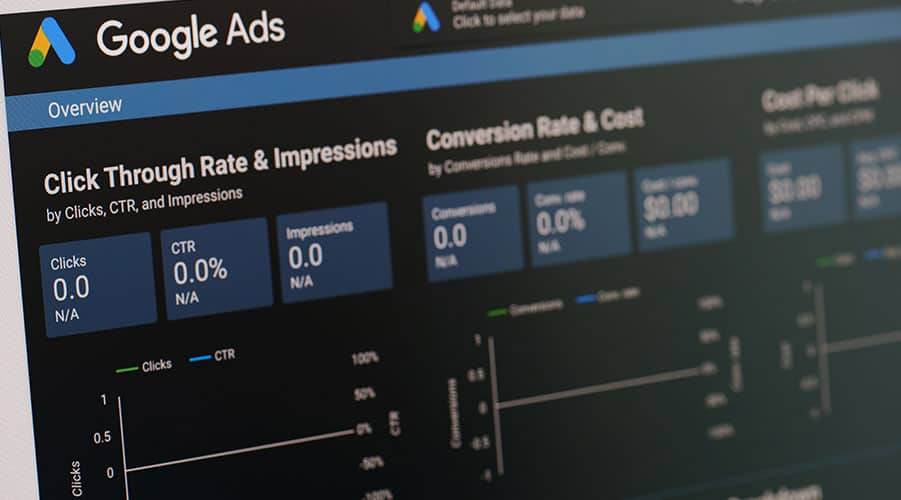
25 Jun Cleaning up crumbs: programmatic digital advertising without third-party cookies
You surf a few websites online for the best prices on a medical product – syringes or test strips, for example – and the next thing you know, wherever you go on the web, you see ads for syringes and test strips…from websites you didn’t even visit!
What makes this possible? One answer: third-party “cookies” that track your every move online.
The role of third-party cookies in digital advertising
Third-party cookies are crumbs of data – snippets of computer code – implanted with tracking pixels by web domains other than the one you’re visiting. Without your consent, they follow your online behavior across all the different websites you visit.
Third-party cookies are like digital spies, tracking your every click, every scroll. This makes them a very valuable tool for marketers, but they’re about to go away.
Cracking down on the use of third-party cookies
Anyone with even just a passing knowledge of HIPAA (Health Insurance Portability and Accountability Act) regulations can see the problem – uninvited tracking of your every online movement, particularly regarding your body and health, is an invasion of privacy.
The proliferation of advertisers using third-party cookies has led to heightened privacy concerns and prompted regulatory bodies worldwide to take action. That’s why the era of third-party cookies is coming to an end, which some marketers refer to as “3P deprecation.”
The General Data Protection Regulation (GDPR) in Europe and the California Consumer Privacy Act (CCPA) in the United States are just two examples of recent, stringent regulations aimed at safeguarding online user data from prying eyes.
Taking a stand in Silicon Valley
In addition to governmental authorities, private companies are also taking action to curb the use of third-party cookies by marketers. For example, Google plans to phase out third-party cookies on its Chrome browser in 2025. (Note: Google has delayed the phase-out multiple times since announcing it would take place in 2022.)
Apple now blocks third-party cookies on its Safari browser. Same for Mozilla and its Firefox browser.
Posing a predicament for programmatic
What does the end of digital advertising without cookies mean specifically for digital programmatic advertising, where precision targeting reigns supreme? Without third-party cookies to map users’ online journeys, advertisers face a more daunting challenge in reaching their target audiences effectively and cost-efficiently.
Third-party cookies helped drive targeting based on individuals’ online behavior. And this type of behavioral targeting will soon be a thing of the past.
But other options remain, and new targeting techniques are emerging. Healthcare marketers are used to navigating privacy regulations and therefore may be best poised to rely more on the use of privacy-party cookies, contextual targeting, and other approaches.
Now topping the digital marketing menu: first-party cookies
While third-party cookies are getting swept away, their first-party counterparts are becoming the focus. First-party cookies are directly tied to the website you’re visiting. They are used primarily to enhance user experience and to remember your preferences specifically on that website for future visits. Think of them as friendly hosts welcoming you into their digital domain. And no other web server can access them directly.
First-party cookies enable a different form of behavioral targeting – still based on your online behavior but ensuring that you are targeted only by entities you have chosen to engage with.
Now more than ever, it is critical for you to ensure the integrity of the first-party data gathered from your website, social media, CRM, and apps. Perform a checkup to examine how you collect it, store it, and use it to support your healthcare marketing strategies.
Capitalizing on contextual targeting
First-party cookies drive contextual advertising, which analyzes webpage content to deliver relevant ads. Instead of tracking individual users’ movement throughout the web, contextual advertising focuses on the context of the content they’re currently consuming and serves up only ads related to that subject matter.
By aligning ads with the content that users actively engage with, advertisers can still deliver relevant messages without infringing on privacy. It’s potentially a win-win situation, where users see ads that resonate with their interests and advertisers reach engaged audiences ethically.
Understanding Google’s “Topics”
When Google initially announced that they would be phasing out third-party cookies, they also announced that they would replace them with Federated Learning of Cohorts (FLoC), a proposed solution that would have grouped users with similar browsing interests into cohorts for targeted advertising.
Then, in 2022, Google announced that they wouldn’t be proceeding with the FLoC approach after all. Instead, they will use Topics, a different approach to learning about users’ behavior to target them with content.
As users surf the web, Topics will learn about their interests based on the sites they visit and will store up to 300 interests for three weeks before deleting them. So, Topics determines the content of greatest interest to users and groups those users into targets for advertising; the users don’t have to visit the same websites to be grouped together – they just have to consume content of the same topic.
To optimize privacy and control for users, Google Topics will enable them to review and edit their list of interests.
Identifying alternative identifiers
Another avenue gaining attention is the use of alternative identifiers, such as Unified ID 2.0 (also called UID2). This open-source identity framework aims to provide a privacy-centric advertising solution for identity resolution in a cookieless environment – across websites, mobile apps, connected TV, and other channels.
These encrypted identifiers offer a way for advertisers to maintain audience targeting capabilities without relying on third-party cookies and compromising privacy.
Making the most of new metrics
Measuring ad performance and digital conversions is going to be different without the use of third-party cookies. While advertisers may see less audience data overall, they may benefit from advances such as machine learning and its ability to assess the probability of audience behavior to plan promotions and measure their effectiveness.
This approach uses principles and practices similar to those of contextual targeting and the FLoC solution to target people, predict their interests, and measure their online activity based on how others (thousands or even millions) have behaved previously.
Bottom line: The elimination of third-party cookies makes this the ideal time to rethink certain KPIs you’ve established for your brand that measure audience engagement with your digital programmatic advertising.
Getting your just desserts without cookie crumbs
As digital programmatic advertising opportunities evolve, and as new challenges arise, adaptability is key for healthcare marketers. Embracing privacy-centric initiatives, harnessing the power of contextual advertising, and exploring alternative audience targeting and activity measurement methods will be crucial for success when third-party cookies become just a memory.
Still have questions about healthcare marketing without third-party cookies? Let’s talk over coffee and… cookies (first-party, of course).
See how we can help

